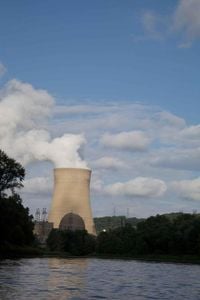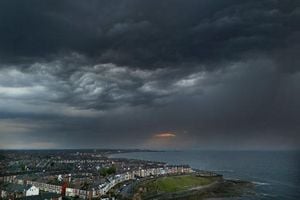As the war in Ukraine grinds on into another autumn, a new crisis is brewing—not just in the trenches and skies, but within the reinforced concrete walls of Europe’s largest nuclear facility. On October 1, 2025, Ukrainian President Volodymyr Zelenskyy and International Atomic Energy Agency (IAEA) Director-General Rafael Mariano Grossi sounded the alarm over the Zaporizhzhia Nuclear Power Plant, currently under Russian occupation and facing its most prolonged power emergency yet. The plant, a towering symbol of both technological prowess and peril, lost its external power supply more than a week ago. Since then, its crucial cooling systems for six shutdown reactors and spent nuclear fuel have run on emergency diesel generators—a situation never before sustained for such a long stretch.
“The generators and the plant were not designed for this,” Zelenskyy declared late Tuesday, describing the situation as critical. According to the IAEA, there’s no immediate danger to Europe’s largest nuclear plant, but Grossi minced no words: this is “clearly not a sustainable situation in terms of nuclear safety.” The backup generators, after all, are supposed to be a last-ditch safeguard, not a long-term solution.
The Zaporizhzhia plant, nestled in southern Ukraine, is among the ten largest nuclear facilities worldwide. It’s been under Russian control since just days after Moscow’s full-scale invasion began on February 24, 2022. The plant has repeatedly found itself in the crossfire, and on September 23, 2025, it lost off-site power for the tenth time during the war. Military activity damaged the only remaining power line a mere 1.5 kilometers from the plant, forcing operators to rely on eight diesel generators, with nine more on standby and three undergoing maintenance, as reported by the IAEA.
Grossi emphasized the urgent need to restore off-site power, stating, “The current status of the reactor units and spent fuel is stable as long as the emergency diesel generators are able to provide sufficient power to maintain essential safety-related functions and cooling.” An IAEA team at the site confirmed that fuel reserves should keep the generators running for more than ten days, with regular deliveries maintaining that buffer. Nevertheless, the margin for error is uncomfortably slim.
The blame game is in full swing. President Zelenskyy pointed the finger at Russian artillery for severing the power line, while Kremlin spokesman Dmitry Peskov countered that it was Ukrainian shelling—a claim he called “stupid” since Russia controls the plant. As both sides trade accusations, the Vienna-based IAEA walks a diplomatic tightrope, seeking to maintain access and issue warnings without antagonizing either party.
Meanwhile, the rest of Europe watches nervously from afar. On October 1, leaders from across the continent gathered in Denmark for summits on security and defense, the war in Ukraine looming large on the agenda. Recent violations of European airspace by unidentified drones and Russian warplanes have only heightened the sense of unease.
The Zaporizhzhia crisis is more than a regional emergency—it’s a stark reminder of the risks inherent in nuclear power, especially in times of conflict. And it comes at a moment when the global debate over nuclear energy is being reignited by another existential threat: climate change.
According to a recent article published on October 1, 2025, the world’s major powers have hesitated to invest seriously in climate solutions, prompting some to look again at nuclear energy. Nuclear doesn’t emit carbon dioxide, the main driver of global warming, making it an attractive—if controversial—option. Yet, as the article notes, the nuclear industry has largely stagnated since the early 2000s, stymied by rising costs and public opposition fueled by a string of high-profile disasters.
History casts a long shadow over every discussion of nuclear safety. The 1950s leak at Sellafield (then Windscale) in Britain, the near-meltdown at Three Mile Island in 1969 in the US, the catastrophic explosions at Chernobyl in 1986, and the 2011 Fukushima disaster in Japan all serve as somber warnings. Each incident, the article points out, was exacerbated by design flaws, human error, or natural disasters—factors that risk models often fail to anticipate.
At Chernobyl, the lack of a containment vessel around the reactor core allowed a massive radioactive cloud to spread across Europe, prompting the evacuation of hundreds of square miles. Fukushima’s backup systems failed when both power lines and generators were knocked out by earthquake and tsunami. “It is just luck that a disaster has not occurred” at Zaporizhzhia, the article argues, given the fighting and shelling nearby.
Even when the reactors are quiet, the threat lingers. Spent nuclear fuel remains dangerously radioactive for at least 100,000 years, and no foolproof method for long-term storage has been devised. Deep underground repositories and ocean dumping have their own vulnerabilities—earthquakes, geological shifts, or even future wars could breach containment. The quantities involved are staggering: Britain’s Sizewell C, now greenlit for construction, is projected to generate nearly 27,000 tonnes of radioactive waste over its 60-year life. The US alone was storing 88,000 tonnes of spent nuclear fuel as of 2023.
The debate over nuclear power is further complicated by the urgency of climate action. The Intergovernmental Panel on Climate Change (IPCC) warns that the next two decades are critical if humanity is to avoid the worst effects of global warming. But nuclear expansion is slow work. Take Hinkley Point C in Somerset, UK: planning began in 2007, construction started in 2016, and it’s not expected to be operational until at least 2031—possibly 2033. Even under ideal conditions, nuclear projects take years, if not decades, to deliver results.
Meanwhile, renewables like wind and solar, alongside energy efficiency improvements, offer more immediate relief. The article notes that government insulation programs in Britain once reached half a million homes annually, but austerity cut that number to 60,000 by 2022. The new ‘Great British Insulation Scheme’ aims to help 400,000 homes by 2026, but critics argue that much more could be done, and faster, with greater investment.
There’s also hope on the horizon in the form of nuclear fusion. Unlike current fission reactors, fusion promises energy without long-lived radioactive waste and with built-in fail-safes. But, as the article cautions, commercial fusion is likely at least 20 years away, despite recent breakthroughs, especially in China.
So, what’s the path forward? Green hydrogen, made using surplus renewable power, could fill the gaps when the sun doesn’t shine and the wind doesn’t blow. Existing power stations could be converted from burning natural gas to hydrogen—a transition that, while costly, could be accomplished more quickly and cheaply than new nuclear builds.
As the world weighs the risks of nuclear power against the perils of unchecked climate change, the Zaporizhzhia crisis stands as a sobering case study. The plant’s precarious status highlights the dangers of relying on nuclear energy in a volatile world—and the high stakes of failing to act decisively on climate. The choices made now will echo for generations, shaping not just the fate of one embattled facility, but the future of energy and safety for all.




